-
Posts
3,873 -
Joined
-
Last visited
-
Days Won
10
Content Type
Profiles
Forums
Blogs
Gallery
Events
Store
Posts posted by Bob
-
-
Anybody know Georgian?


 0
0 -
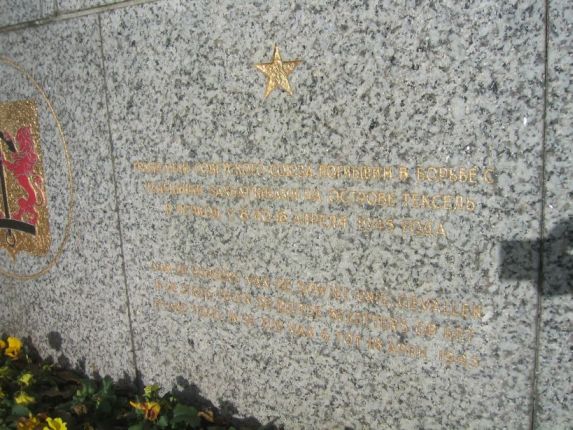
In gold text "to the civilians of the Soviet Union who've fallen in the fight against German occupiers on the island Texel during 6-18 April, 1945
 0
0 -
I was also surprised to see the Hammer & Sickle on a cemetary on a small island in the North Sea!
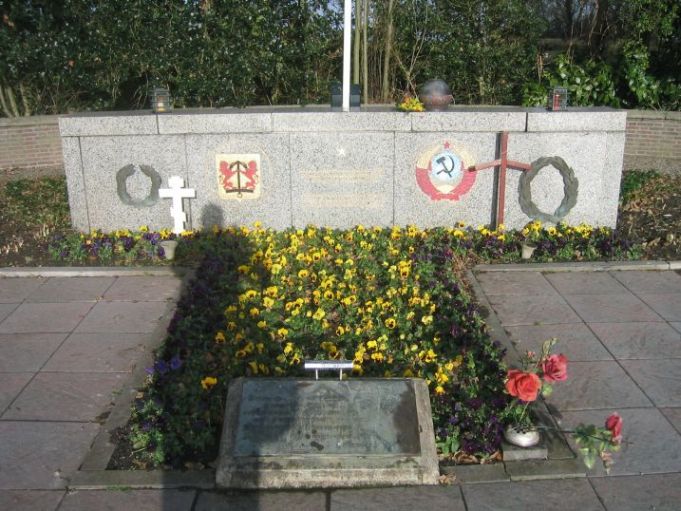
 0
0 -
From the online Georgian Times for instance:
President Respects Georgian Hero
The Wednesday Cabinet Meeting of Georgia started with a speech by President Mikheil Saakashvili on the Texel uprising , mentioning Pokro Gakhariadze from Zugdidi, one of the Georgian heroes, who passed away several days ago.
The President and the members of the Cabinet respected the victims of the uprising with a minute of silence. The President referred the Texel uprising as a dramatic event for the European history.
'Several hundred of Georgian soldiers, completely deprived of weapons, disarmed the outnumbering German garrison and has been showing fierce resistance for several months. The Georgians have been fighting with heroic zeal. At the same time their mission has to be highlighted. I am trying to say that those people have been underestimated - many of them have been arrested, exiled and had to spend the rest of their lives in repression. Without outstanding effort by Rezo Tabukashvili the Textil's events would have been lost for the history of Georgia. And this should not be forgotten as Georgia is a country of heroes', Mikheil Saakashvili said.
rustavi2
2007.07.18 15:14
0 -
Not a large cemetary... but of great significance!

 0
0 -
Communal grave of the Soviet soldiers from Georgia
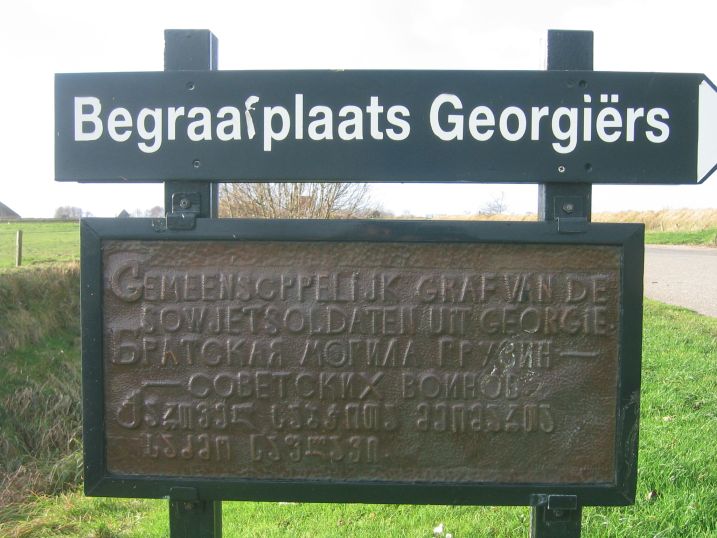
 0
0 -
The purpose of my trip to the small island of Texel... the Georgian Cemetary - resting place of heroes!
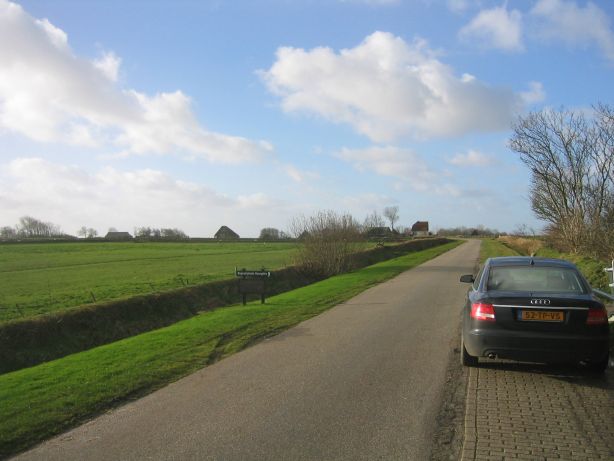
 0
0 -
And on the other side of the dike on the right... nice view

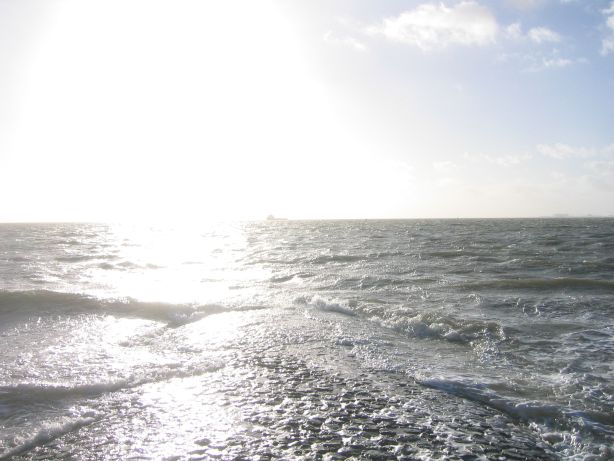
 0
0 -
Now... how does this island Texel look?
Small sign on the left pointin inland to the Georgian Cemetary on this little island in the North Sea.

 0
0 -
Note, a great little book on the Georgian rebellion is for sale (in English by the way): http://www.hetopenboek.nl./htm/overzicht02.htm
0 -
More detail from http://www.1jma.dk/topic.asp?TOPIC_ID=1179...archTerms=texel
Before I show some pics from my recent visit to Texel.
============================================================
Essay on 822nd Georgia Battalion / Research Help Appeal
Feldgrau.net Forum Index -> Foreign Volunteers, Collaboration and Axis Allies
View previous topic :: View next topic
Author Message
alan newark
New Member
Location: England, UK
Posted: Sun Mar 23, 2003 4:17 am Post subject: Essay on 822nd Georgia Battalion / Research Help Appeal
----------------------------------------------------------------------
Feature from: Alan Newark 34 Rossefield Parade, Leeds, LS13 3RW, England; UK.
Tel: +44 1132 250502 Fax: +44 1132 682125 Mobile:+44 7768 958709
E-mail: braveheart562002@yahoo.com
Catch: Yalta 1945
Copyright: Alan Newark, Leeds, UK (23 March 2003)
Bank details by Fax if commissioned
Begins: Blood and Tears - Stalin's Forgotten Heroes
At least 30,000 and possibly up to 100,000 Georgians served in Hitler's armed forces....
Some of these 'renegades' were anti-Communist nationalists but most, says Jason Pipes' 'Feldgrau' website, were former Red Army ' volunteers' captured by the Germans and enlisted, while facing certain death from starvation, disease, forced labour and brutality, in POW lagers. Many were conscripted and thus had no choice.
Serving in the 13 field battalions, each having 5 companies and 800-strong, of the Wehrmacht's Georgia Legion, Georgians were also found in the Wehrmacht's North Caucasian Legion and in other Caucasian ethnic legions.
As volunteer Freiwilligen, scattered across many divisions, they manned supply,guard and pioneer units while others earned grudgiing respect as combat engineers. In Slovenia and Northern Italy, they fought bloody campaigns as anti-partisan troops. Some Georgians rode under the banners of a Waffen SS cavalry formation while a handful, legend has it, even flew for the Luftwaffe.
Given that they were Joseph Stalin's fellow countrymen and thus a major embarrassment to the Soviet leader and their mutual home republic, one must assume that Georgian 'renegades' captured and repatriated by the Red Army and the Western Allies, were especially fearful of Stalin's wrath.
Establishing precisely what happened to these returning Georgian renegades, for little is known about this in the West and recent attempts to rehabilitate Stalin as a cult figure make this a timely study, is just one aim of this writer's long-term researches for a book entitled Blood and Tears - Stalins Forgotten Heroes.
The Blood and Tears element will focuss both on the desperate circumstances which prompted many Georgians to don enemy uniform and the tragic episodes (which this writer views as the unfortunate but outcomes of legitimate wartime diplomacy) resulting from the Western Allies agreement, at Yalta in February 1945, to the compulsory repatriation to the USSR of all Soviet citizens liberated or captured by their forces.
Chapters embraced by Stalin's Forgotten Heroes will remind Western readers of the importance to the Allied cause in early April and May of 1945 of the 6-week Mutiny and partisan campaign waged on the Dutch island of Texel by the Wehrmacht's 822nd Georgia Battalion. Pinning down 4,000 German troops and armour during 1st Canadian Army's drive across Western Holland, the Texel Georgians killed at least 400 Germans and wounded or killed hundreds more ( a 1945 Canadian report estimated over 2,000 German casualties ).
These chapters will also highlight how, due to a combination of Canadian willingness to defy the Western Allies' policy of non-interference in Soviet handling of post-Yalta repatriation operations and of Soviet guile not only in exploiting the mutineers' propaganda value but also in rewriting the outcome of their rebellion, the Texel Georgians were transformed from Stalin-reviled renegades into, to quote a 1946 Pravda article, Soviet patriots.
This writer's proposed book has drawn Canadian War Museum interest.
The Texel Mutiny, for example, had long-neglected value as a diversionary attack threatening Texel's role as an important stretch of the Atlantik Wall defensive system. My work is also important because it will examine, for the first time, the repatriation from North Central Germany of the thousands of Soviet citizens, including the Texel Georgians, handed to Soviet forces in Eastern Germany and Poland by Canadian Sector units attached to Field Marshal Montgomery's 21 Army Group.
From a German perspective, the Texel Mutiny could have ignited (it did not) similar rebellions among the 100,000 German Soviet volunteers and conscripts strung out along Holland's coastline or, even, among the far-off brigades, in Central Europe, of the largely Russian and Ukrainian Vlasov Army.
Once alerted to the Texel Mutiny, the Hitler Bunker in Berlin demanded the swift suppression of the rebellion and the summary execution of the Georgia Battalion's 800 mutineers.
From the earliest moments, the Texel Mutiny was a bloody affair with no prisoners taken and atrocities conducted by both sides. The Dutch civilian population also suffered terribly during the fighting and bombardments which raged across an island largely untouched , until 6 April, 1945, by the wider European conflict and which German combat troops had previously enjoyed as a rest area. Copies of German documents and photographs and personal accounts of the Mutiny are also welcomed.
Published a decade before this writer first learned, in 1989, from Glasgow-based Dutchman and retired Scotch whiskey exporter Eddy Teske, of what the latter called the Texel Cossacks? Rebellion, Dick van Reeuwijk's handy-sized, soft cover, book Sondermeldung Texel - Opstand der Georgiers; , summarised earlier works but advanced study of the mutiny by tracking down and interviewing Georgian and German veterans.
Recently re-issued in English, price 1.70 Euros, as The Georgian Rebellion on Texel and translated by Judith Hin, Dick's book is available from publisher Theo Timmer's Het Open Boek bookshop in Den Burg, Texel / www.hetopenboek.nl.
Generously illustrated, the book provides numerous, highly readable, snapshots of the intensity with which the 1945 mutiny was waged. Het Open Boek also stocks several other titles, including bulkier Dutch language accounts by van der Vlis and Kalkman - Bartels, about the uprising.
The van Reeuwijk work does contain a copy of the controversial June, 1945, message in which General Charles Foulkes, Commander of the Canadian 1st Corps in Holland and his Civil Affairs staff officer, Lieutenant Colonel Lord Tweedsmuir, praised the Texel Georgians as valiant allies and urged the Soviet High Command to immediately rehabilitate them as heroes.
What it does not offer and what this writer, with the encouragement of the Mayor of Texel, has undertaken to compile, is an accurate chronicle of what really happened to the Texel Mutiny survivors after they left Anglo - Canadian jurisdiction in mid-1945 and began their long trek back to Georgia.
Given that, after years of research, this writer knows of no other Georgian renegades who were granted such en-bloc exemption from their expected fate at the hands of Stalin's NKVD and SMERSH security troops and that no other group of returning Georgians seems to have merited the several months of high-level diplomatic and military exchanges which coloured their transfer to Soviet custody, such a chronicle is long overdue.
Also sure to be controversial with regard to the Texel Georgians' repatriation, is present day public, academic and Press reaction to the Canadian Army's clear defiance - one assumes this had political support from Ottawa, was backed by the Canadian Military HQ in London and was known to Montgomery's Canadian personal aide, Lt. Colonel Trumbell Warren, at 21 Army Group HQ - of the Western Allies' overall policy of non-interference in Soviet handling of their returning citizens.
Across many fronts and often with a nod and a wink from local commanders, there were scattered efforts by Western officers and Other Ranks to frustrate and, on occasion, to prevent Yalta's compulsory and often forcible repatriations of Soviet nationals. Perhaps the highest level such effort was that of Field Marshal Alexander and General Eisenhower in sending a large fleet of American trucks and a guarantee of safe passage into American - held territory to commanders of the thousands of Cossacks, Croats and Serbs being forcibly repatriated to the Soviet Zone of Southern Austria by the British V Corps.
The trucks, claimed British authors Lord Bethell and Count Niklai Tolstoy, (tolstoy@enterprise.net) both implacable critics of the Yalta compulsory repatriation agreements and of the manner in which both the Western Allies and the Soviet Army treated their returning charges, were turned back on the edge of V Corps' sector. Handover operations conducted by V Corps at Judenburg, Bleiberg and other locations were facilitated through deception and involved scenes of, they claim, needless violence.
Branding the late V Corps commander as a war criminal, Count Tolstoy has been the focus of a globally reported UK libel trial, which he lost, and of a sympathetic - to - him follow-on Appeal finding by the International Court of Human Rights. Author of the 1980's work Victims of Yalta, which he plans to follow with a New Millennium sequel, Tolstoy shares his feelings about the above Austrian scenarios with the Russian human rights campaigner Alexander Solzhenytsin.
In the above book, Tolstoy's footnotes do briefly touch upon the Texel Mutiny but his researcher, basing his notes on an Allied interrogation report, as seen by this writer in London, and failing to pursue enquiries in Holland, seriously misreported the duration and impact of the Mutiny but did accurately refer to extended, post war, Allied-Soviet communications about the mutiny survivors. The Count, with whom this writer does not agree, has nonetheless described my researches as a 'greatly important' contribution to the on-going Yalta debate.
From a Canadian viewpoint, Blood and Tears will suggest, Ottawa's revived attention should be focussed upon 18 May 1945, when Lieutenant Colonel Kirk of 1 Survey Regiment, Royal Canadian Artillery, and his Adjutant, Captain Don Fletcher, led a reconnaissance trip to Texel. There they found that island's German garrison on high alert and still sporadically fighting with the rebellion's Georgian survivors.
Almost 60 years later, the Mutineers' commander, Captain Shalva Loladze, and 476 of his 800 men lie buried in Texel 's beautifully tended Georgian War Cemetery. In 1945, they and the Georgia Battalion's survivors were regarded by the Texel islanders and by the Canadians as heroic allies. Thanks to the guidance of Professor Carlo Gentile in Koln, Germany, a Dienstelle-WASt 1945 Muster Roll of the 822nd Georgia Battalion will soon be with this writer. Also likely to be with the largely hand-written Roll is a previously unknown Wehrmacht report about the Texel Mutiny.
Mindful of Texel's Georgian war dead lying in unmarked graves,, due to the Battalion's German commander having destroyed all operational materials, an accurate Muster Roll has been sought by Dutch and Georgians alike since 1945. This writer hopes to be able, at this year's 4 May Liberation Day ceremony at the above cemetery, to facilitate the presentation of that list to the Georgian Ambassador and Dutch authorities. Meanwhile, other searches are underway concerning official German graves' lists.
Lieutenant Colonel Kirk, though this, like the Georgians' evacuation, is not recorded in his unit's War Diary, was so impressed by the Georgians' resistance efforts that he refused to regard them as Enemy Personnel. Instead, he labelled them Displaced Persons and allowed them, while on the island, to retain personal weapons.
Canadian Texel veterans have told this writer of the cordial relations which prevailed not only between them and the Georgians but, also, the surrendering Germans. Although one Canadian claimed that he and his comrades did not have to fire a single shot during their evacuation of Texel's still-heavily-armed German garrison forces, there is anecdotal evidence, collated by this writer on Texel and in the UK, that numerous clashes occurred between emerging Georgian partisans and German troops anxious to leave the island.
Joseph Stalin, meantime, was especially keen, regardless of the circumstances in which troops like these volunteered, to secure the return of so-called renegades who, like the Texel mutineers, had donned enemy uniform. Unwilling to let the Soviet people know of the existence or the extent of such collaboration , Stalin planned to execute many of their officers and to dispatch other 'renegades, traitors and deserters' to isolated forced labour projects from which few returned. About 15% of the overall figure were sent to Siberia.
The Texel Georgians could not have known of the Yalta Conference repatriation agreements but they did not expect their mutiny to win them any mercy from the Red Army. Indeed, the surviving Georgians were so worried about this that many asked, unsuccessfully, for permission to stay in Holland. In the end, they refused to leave Texel voluntarily unless the Canadians agreed to speak to the Soviet authorities. The result was the above 1st Corps HQ letter of June 1945.
Dick van Reeuwijk did not mention this but Lord Tweedsmuir also oversaw the Georgians' 16 June 1945 evacuation from Texel and accompanied their convoy, guarded ( as recorded by author Wim Kalkman) by personnel from the Princess Patricia's Canadian Light Infantry (PPCLI) , to the German Baltic port of Wilhelmshaven
At Den Helder, as the Georgians arrived on the Texel ferry and as they formed up and marched off to waiting trucks, they were photographed, this writer learned, by a Canadian Army officer, Lieutenant J.G. Woods. They were also filmed by an as - yet - unidentified cameraman who could have been a Dutchman or from a Soviet security or propaganda unit. In Wilhelmshaven, as promised, Tweedsmuir spoke on the Georgians' behalf to Soviet Repatriation Commission liaison officers attached to 21 Army Group. Some time during their homeward journey, says the Dutch National War Museum, website, each of the Georgians was also issued an individual Certificate of Bravery.
At Wilhelmshaven, wrote Dick van Reeuwijk in a tantalisingly brief paragraph, the Georgians 'were handed over to the Soviet authorities' . In early 1946, a process which Dick states was remarkably quick for men whose numerous counterparts were elsewhere more likely to face ' a bullet in Siberia ', the Texel Georgians' returned to Tbilisi, the capital of their motherland'.
According to two former Georgia Battalion officers interviewed by van Reeuwijk, that homecoming was preceded by nothing more strenous than a few months' additional service in the Soviet Army. The homecoming itself was allegedly a triumphal welcoming ceremony at the Georgian border and widespread popularity due to military newspaper reportage of the Texel rebellion.
Such, therefore, was the impact of the Canadian Army's intervention that the majority of the Texel Mutiny survivors escaped serious punishment and lived to be told, in 1956, of their eventual rehabilitation by the Kruschev regime.
In 1946, as this writer established, Pravda not only hailed them as Soviet patriots but also published a British Embassy acknowledgement that the Mutiny, while a mere skirmish in the eyes of Montgomery and other 1945 Allied war planners, deserved greater acknowledgement.
Some mutiny survivors were even offered roles as key characters and extras in a 1953 Soviet propaganda film, The Crucified Island, which (background info and UK VHS copy welcomed) celebrated their rebellion. Again, van Reeuwijk mentioned the film but merely as evidence of a thaw in Soviet attitudes.
He overlooked the film's reported claim, now resented by some older Texelaars, that Texel was liberated by the Georgians. Georgian veterans reputedly reminded the Dutch of this implied debt during post-war visits, thus ignoring the reality that the island was not officially liberated, by the Canadians, until 20 May 1945. The film also claimed that, far from being Georgian nationals in enemy uniform who had mutinied against their German overseers, the Texel rebels were prisoners of war who broke out of their camp and freed the island from its fascist occupiers. That myth was also still firmly believed by some mutineers' families as recently as 1995.
In that year, when shown a small exhibition staged in their honour at Texel's much-fought-over lighthouse ( since restored but built around the original shell - pocked 1945 structure ), visiting relatives were shocked to see photographs of Georgians in German uniform and carrying or firing German weapons. How could this be, they asked, the unwitting victims , 42 years on, of a clever piece of 1950's, Kremlin - endorsed, celluloid trickery.
So, there is no doubt that, by 1947, most of the Texel Mutiny survivors were safely home in Georgia. Like the above Georgian relatives, however, Dick van Reeuwijk and his publisher Theo Thimmer , now proprietor of Texel's Het Open Boek outlet, were the victims of the same deception process which spawned The Crucified Isle ( this in no way diminishes the overall value and content of Dick's book which is highly recommended).
The survivors did make it home and they may well have been swiftly transferred to Soviet custody at Wilhelmshaven ( one of two locations, the other being Oldenburg, where, this writer has established, the Canadians maintained Lower Saxony / Niedersachsen camps for Soviet Displaced Persons ). Dutch sources, partially backed by 1960's Soviet publications, however, insist that the Texel Georgians' homecomings were scattered across a two-year period and were achieved only after a 2 - year trek through Holland, Germany, Eastern Europe and the Caucasus Mountains.
There was almost certainly no 1946 en-masse triumphal welcome at the Georgian border - the Georgians were, in 1946, in a camp near Baku and are said to have slipped away from that camp, individually and in groups, over a period of 12 to 18 months - and Dutch sources insist that the veterans were officially warned, at least until the 1960's, not to discuss their experiences in public.
This writer, for the record, knows of camps where they are known or likely to have been held in Hannover Provinz - Niedersachsen, Poland, Belarus and Azerbaijan. This list is by no means comprehensive and requires additional, externally funded, field research in each of these countries, in London and Ottawa and in Moscow(what was the overall / were the regional NKVD - SMERSH chains of command in these republics / countries in 1945-47 ?..Ditto Party leadership ? How would the repatriation process, probably via Mecklenburg - Pommern by rail to Szcecin or by boat or rail from Wilhelmshaven have panned out in realtime ?..Army / Group / District Commands / Berlin Red Army and STAVKA Liaison / NKVD - SMERSH Liaison ?)
To this day, the few remaining Texel Mutiny survivors are reluctant to reveal both the actual date and location of their 1945 transfer to Soviet custody and the identity of the Anglo--Canadian and Soviet military units and higher authorities which oversaw their transfer. Subject to sponsorship needs and in a race against time and the veterans' ages and health, this writer hopes to visit Georgia, to gain their trust and to secure such details.
What is known is that their handover must have occurred sometime between their mid - Jjune 1945 arrival in Wilhelmshaven and their 12 September 1945 arrival at a camp near Stettin in Poland. They are said to have travelled to their handover point by train and to have been well-treated by their Western guards but roughly treated by Soviet compatriots.
Indeed, rumour has it that, during their tranfer in the company of unidentified fellow North Caucasians, the Texel Georgians were almost shot. Why and by whom is not yet known. Again, personal interviews could supply the answers.
According to yet-to-be-seen documents in Ottawa, Canadian troops overseeing the East - bound transfers of Displaced Persons from Lower Saxony recorded only one major incident, in a camp, involving the use of force against Soviet nationals. Individual Cannucks are said largely to have viewed their task with distaste. A Canadian officer receiving a 1946 order announcing the cessation of such transports reportedly annotated the document 'Thank God'.
Today's Georgian folklore still praises the brave POWs who rose up and liberated Texel in support of the advancing mainland Allies. The Texel mutineers' bloody struggle is also described by Dick van Reeuwijk's book as Europe's Last Battle.
Six decades on, that battle will be revisited in this writer's forthcoming book not only as a major and too-long-neglected supportive gesture in support of Canada's liberation efforts in Holland but, also, as the backdrop to one of the Kremlin's most enduring and successful post-war propaganda exercises.
Newark ? Ends
Copyright: 23 March 2003
Email: braveheart562002@yahoo.com
Author: alan newark
_________________
Torwold Press & Media, 34 Rossefield Parade, Leeds, England - UK, LS13 3RW.
Tel: +44 (0) 1132 250502
Fax: +44 (0) 1132 682125
Mobile: +44 (0) 7769 859709
0 -
Now to the heart of the matter: The Georgian Uprising of Texel - http://en.wikipedia.org/wiki/Georgian_Uprising_of_Texel
Again from Wikipedia:
"Georgian Uprising of Texel
From Wikipedia, the free encyclopedia
Jump to: navigation, search
Texel islandUprising on Texel
Part of World War II, Western Front
Date April 5, 1945 ? May 20, 1945
Location Texel Island, Netherlands
Result German Pyrrhic victory
Combatants
Georgian Legion Germany
Casualties
565+ KIA 800+ KIA
The Georgian Uprising of Texel (Dutch: Opstand der Georgi?rs) (April 5, 1945 ? May 20, 1945) was an insurrection by the 882nd Infantry Battalion K?nigin Tamara (Queen Tamar or Tamara) of the Georgian Legion of the Wehrmacht stationed on the German occupied Dutch island of Texel (pronounced tessel). The battalion consisted of 800 Georgians and 400 Germans, with mainly German officers. The event has been described as Europe's last battlefield.
The heavily fortified island was a pivotal point in the German Atlantic Wall system of defense. The men of the rebellious battalion were soldiers from the Georgian Soviet Socialist Republic captured on the Eastern front. They had been given a choice rarely offered by the Germans: the captured soldiers could choose either to remain in the POW camps, which would mean almost certain death, or to serve the Germans and be allowed a degree of freedom. The battalion was formed of men who chose the latter option.
The battalion had been formed at Kruszyna near Radom in Poland in June 1943 and was used initially to fight partisans. On 24 August 1943 it was ordered to the West to relieve troops of the Indische Freiwilligen-Legion Regiment 950. The battalion arrived at Zandvoort in the Netherlands on 30 August. From September 1943 to early February 1945 it was stationed at Zandvoort as part of the "Unterabschnitt [subsection] Zandvoort". The German military authorities initially intended to rename the unit IV. Batallion J?ger-Regiment 32 as part of the 16th Luftwaffe Field Division, but this change was not effected. On 6 February 1945 it was posted to Subsection Texel and received the fake designation Grenadier Regiment 177 of the 219th Infantry Division in early March. Preparations then started in late March 1945 for a move of several companies of the 882nd battalion to the Dutch mainland to oppose Allied advances ? triggering the rebellion.[1]
On the night of April 5 ? 6, 1945, at 0100 the Georgians rose up and nearly gained control of the entire island. Approximately 400 Germans lost their lives in the initial uprising, nearly all were killed in their sleep by the Georgians with knifes and bayonets in the quarters they shared together, others while unsuspectingly standing guard or walking on the roads of the island that night or the following day, assisted by Dutch supporters of the Georgians.[2] The rebellion hinged on an expected Allied landing, which did not occur.
Because the assumed allied help did not materialize, and because they had failed to secure the naval batteries on the southern and northern coasts of the island, the rebels soon faced a German counter-attack. The 163rd Marine-Sch?tzenregiment[3] arrived from the Dutch mainland and, after two weeks of fighting, retook the island. The German commander of the 882nd battalion, Major Klaus Breitner, stated long after the war that the uprising was ?treachery, nothing else;? the mutineers were ordered to dig their graves, remove their Wehrmacht uniforms and were executed.[4]
During the Russian or Georgian war (as it is known on Texel) about 800 Germans, 565 Georgians, and 117 natives of Texel were killed. The destruction was enormous; dozens of farms went up in flames, with damage later estimated at 10 million guilders. The bloodshed lasted beyond the German capitulation in the Netherlands and Denmark on May 5, 1945, and even beyond Germany's general surrender on May 8, 1945. Not until May 20, 1945 were newly arrived Canadian troops able to pacify "Europe?s last battlefield."
The Georgians lie buried in a ceremonial cemetery at the Hogeberg near Oudeschild. The survivors may have feared to face the same fate as most Soviet POWs: forced repatriation, under the terms of the Yalta Conference, often followed by incarceration and banishment and for officers execution. Stalin considered anyone captured by the enemy to be a traitor, subject to appropriate punishment. The 228 Georgians who survived by hiding in coastal minefields or were concealed by Texel farmers were not prosecuted. However, most disappeared into Stalin?s gulags; those still alive in the mid-1950s were rehabilitated and allowed to return home.[5] Until 1991, the Ambassador of the Soviet Union to the Netherlands visited the graves of the Georgians every May 4th, and at least during the last visits, called the Georgians "Heroes of the Soviet Union." On May 4th, 2005, Mikheil Saakashvili visited the graves for the first time as the President of independent Georgia.
The German victims were initially buried in a part of the general cemetery in Den Burg. In 1949 they found their last resting place at Ysselsteyn military cemetery, Limburg province, the Netherlands. The cemetery is administered by the German War Graves Commission.
The final resting places of Allied flight crews can be found in the community cemetery in Den Burg.
A permanent exhibition dedicated to this event exists in the Aeronautical Museum at the island's airport.
The last Georgian survivor of the uprising died in July 2007 and was buried with military honors in Zugdidi, Georgia.[6]"
0 -
Some may have read the exotic threads on the Order of Queen Tamara related to the Georgian Legion (1914 - 1918)... well, there was a SECOND Georgian Legion... during WWII!
The story gets more exotic... because this legion fought what some call the last battle of Europe.
First Georgian legion: http://en.wikipedia.org/wiki/The_Georgian_...%281914-1918%29
Second Georgian legion: http://en.wikipedia.org/wiki/The_Georgian_...%281941-1945%29
For reference (from Wikipedia) on the Second Georgian Legion:
"The Georgian Legion (1941-1945)
From Wikipedia, the free encyclopedia
Jump to: navigation, search
Georgian officers on horseback lead one of the Georgische Infanterie Bataillons.The Georgian Legion (German: Georgische Legion, Georgian: ქართული ლეგიონი, k?artuli legioni) was a name of a Georgian military formation within the German army during World War II. Their established aim was the restoration of Georgia?s independence from the Soviet Union.
During the Second World War, the Wehrmacht?s ethnic Georgian Legion was formed from ?migr?s living in Western Europe after the 1921 Soviet invasion of Georgia, combined with Soviet prisoners of war of Georgian origin who were enlisted, while facing certain death from starvation, disease, forced labor and brutality in POW camps.
Nazi Germany invaded the Soviet Union in June 1941, though they never reached Soviet Georgia. The Georgian Legion was formed in December 1941. The Georgians trained in the western Ukraine and became operational in the autumn of 1942. At least 30,000 Georgians served in the Nazi armed forces. The Georgians served in 13 field battalions of up to 800 men, each having 5 companies. Georgians were also found in the Wehrmacht's North Caucasian Legion and in other Caucasian ethnic legions. The Georgian military formations were commanded by Schalwa Maglakelidse, Michel-Fridon Zulukidse, Col. Solomom Nicholas Zaldastani and other officers formerly of the Democratic Republic of Georgia (1918-21).
This venture was largely hampered by the intervention of Alfred Rosenberg. Adolf Hitler himself was greatly suspicious of the Georgian and other Soviet battalions. Although they had sworn an oath of personal loyalty to Hitler and some Georgians were in the SS, Hitler's personal guard, across Europe, especially in Italy and France, many Georgian soldiers of the Wehrmacht deserted and joined local Resistance Movements. Eventually, some of the ethnic Georgian units were disbanded and their officers repressed. Many Georgians under Nazi domination were saved only by the intervention of Alexander Nikuradze and some other Georgian scholars who were held in high esteem in Germany.[1] As a result of Hitler?s distrust of osttruppen (eastern troops), the remaining Georgian battalions were moved west to occupation duties in the Netherlands. With the western allies driving into Germany, the Texel-based 822nd Georgian battalion rebelled against their German overlords. The resulting battle, sometimes described as Europe's last battle, continued from April 5, 1945 past the general German surrender, until May 20. This event is the relatively well-known Georgian Uprising of Texel.
In accordance with inter-allied agreements, all Soviet citizens were to be repatriated, by force if necessary, to the Soviet Union. The Soviets treated those who wore German uniforms, such as those in the Georgian Legion, as traitors. They were punished upon their return, with many exiled to Siberia or Central Asia.[2]
Georgian Legion patch.Contents [hide]
1 List of Georgian units in Wermacht
2 Notes
3 References
4 See also
5 External links
[edit] List of Georgian units in Wermacht
List of Georgian units in Wermacht (does not include Georgian Abwehr, SS1 and Luftwaffe)
795 Battalion "Shalva Maglakelidze"
Fighting: 1942 in North Ossetia, 1943 in France
796 Battalion.
Fighting: 1942/43 in Tuapse, North Caucasus
797 Battalion "Giorgi Saakadze"
Fighting: 1943/44 in France
798 Battalion"King Erekle II Bagrationi"
Fighting: 1943/44 in France
799 Battalion "King David Bagrationi-Aghmashenebeli"
Fighting: 1943/44 in France
822 Battalion "Queen Tamar"
Fighting: 1943/44/45 in France and on Texel (The Netherlands)
823 Battalion "Shota Rustaveli"
824 Battalion "Ilia Chavchavadze"
Fighting: 1944 in Lviv, Ukraine Lviv or Lvov, was then part of Poland.
1 SS Waffengruppe "Georgien" was formed on December 11, 1944 and commanded by Waffen-Standartenfuhrer der SS Michail Pridon Tsulukidze"
0 -
-
Suggest you take a look at Nota Bene's (good dealer) site. He has fair prices which should give you an indication.
0 -
Two Labor Heroes for your viewing pleasure
I admit: I get greedy when I see these
 0
0 -
RECENTLY SOLD
pinback
- USD 1.870, nr 1.918, Nota Bene - JANUARY 2007
- USD 1.880, nr 1.785, Nota Bene - JANUARY 2007 (boxed)
- USD 1.950, nr 860, www.russianglory.com - MARCH 2007
- EURO 1.600 (roughly 2.100 USD), nr 1183, www.huesken.com - MARCH 2007
- EURO 1.650 (roughly 2.200 USD), nr 1514, www.huesken.com - JUNE 2007
- EURO 1.300 (roughly 1.700 USD), nr 1246, private seller - SEPTEMBER 2007
- EURO 1.600 (roughly 2.200 USD - before fees!), nr 1514, Andreas Thies October auction - OCTOBER 2007
- USD 1.850, nr 1947, Nota Bene - NOVEMBER 2007
- USD 2.150, nr 1.837, www.collectrussia.com - NOVEMBER 2007
screwback
- USD 1.680, nr 644, Nota Bene - NOVEMBER 2006
- EUR 1.630 (roughly 2.150 USD), nr 585, Albert GMIC - MAY 2007
- USD 2.650, nr 644 (again!), Nota Bene - OCTOBER 2007 (boxed)
- USD 2.900, nr 640, www.collectrussia.com - NOVEMBER 2007
- USD 2.500, nr 777, somewhere in Russia - DECEMBER 2007
CURRENTLY FOR SALE
screwback
- USD 3.300, nr 227, Coinsell (on eBay)
0 -
Just sold in Russia for around $2,500 (58,300 Roubles).
Note interesting serial number - 777!
Better than 666
 0
0 -
Well I think that Igor may still have two that he hasn't listed yet....
Perhaps just a theory but who knows ...My guess is that he'll list #448 at well over 3k any day now and perhaps #1635 will follow...
I'm glad I have a couple and that's enough for me........Just need a few small pieces to complete the puzzle... A21,22,25,31,40.1.2,60 B02 C01,2 D01,2,3 F01

Anybody wanna help???

JC
JC... so can we assume you have an A1 / A2? If so - please show some pics

 0
0 -
There must be more in the book about him but alas beyond Dutch, English and German I'm not very good linguistically.
However, I've got the blue bible (thanks UB!) in my possession now and would be very surprised if - just like the other heroes - there's not a more elaborate bio on Sharav in it.
I'll have a look this evening and post a scan. Your dictionary can hopefully do the rest:)
0 -
The section of the "Sky Blue Bible" that deals with these is quite rich, but also quite complex, far more than just the "simple" linguistic issues. This will take some time to disentangle.
I am, however, hoping to get an early translation of at least one table (p. 184):
I received my Blue Bible and suspect the table provides more detail on the split of the A8 into following award reasons as highlighted by Battushig already:
Merit in Arts 1941
Meritorious Teacher 1942
Meritorious Sport Trainer 1957
Merit in Human Medicine 1960
Meritorious Sport Master 1960
Merit in Veterinary Medicine 1961
Merit in Zoological Technology 1961
Merit in Construction 1963
Meritorious Pilot 1965
Meritorious Airplane Technician 1965
Merit in Culture 1966
Merit in Transport 1966
Merit in Telecommunication 1967
Merit in Irrigation 1968
Meritorious Lawyer 1970
Merit in Trade 1970
Merit in Science 1971
Meritorious Miner 1971
Merit in Economy 1971
Merit in Forestry 1974
Meritorious Agriculturoal Mechanic Worker 1974
Merit in Agronomy 1974
Merit in Industry 1976
Merit in Weather Forecasting 1976
Merit in Service 1978
Merit in Collectivization 1979
Merit in Health Production ?
Note the only awarded one (in Ed's collection: 26 June 1981, for excellent work in collective farms - number 607... perhaps a useful indication for other titles and their possible award reason.
Presumably the table relates to the institution of new reasons for awarding of this title (the reasons listed by Battushig)... and it APPEARS to give a nr of awards per reason.
This award has for some reason not gotten a lot of "high profile" in collecting - not enough enamel I guess

...but given that it appears that there may only be 1662 awarded (? at time of Blue Bible), that the document for receiving such an award is quite beautiful compared with others and the fact that we now have a POSSIBILITY (a lot easier if documented award
 ) of figuring out with the Blue Bible who was awarded it... I'm sure this nice "little" Tilte of Merit will be getting more attention in the future. The Blue Bible certainly has quite some pictures of recipients (with bio next to it) which makes me VERY curious as to the background.0
) of figuring out with the Blue Bible who was awarded it... I'm sure this nice "little" Tilte of Merit will be getting more attention in the future. The Blue Bible certainly has quite some pictures of recipients (with bio next to it) which makes me VERY curious as to the background.0 -
And the final scan. My advice: get this book!

 0
0 -
I'll skip the single Soviet Hero title award winners and just highlight the Mongolian Hero title award winners (earned during Khalkhin Gol)
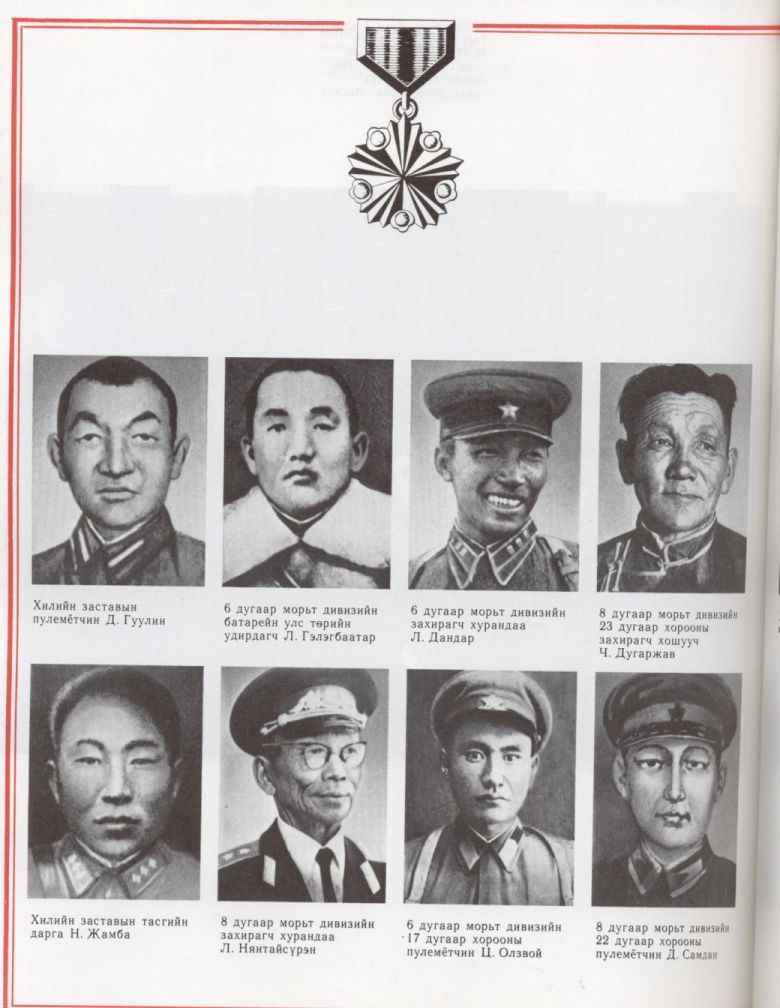
 0
0 -
Recipients of 2 Soviet Hero titles during Khalkhin Gol
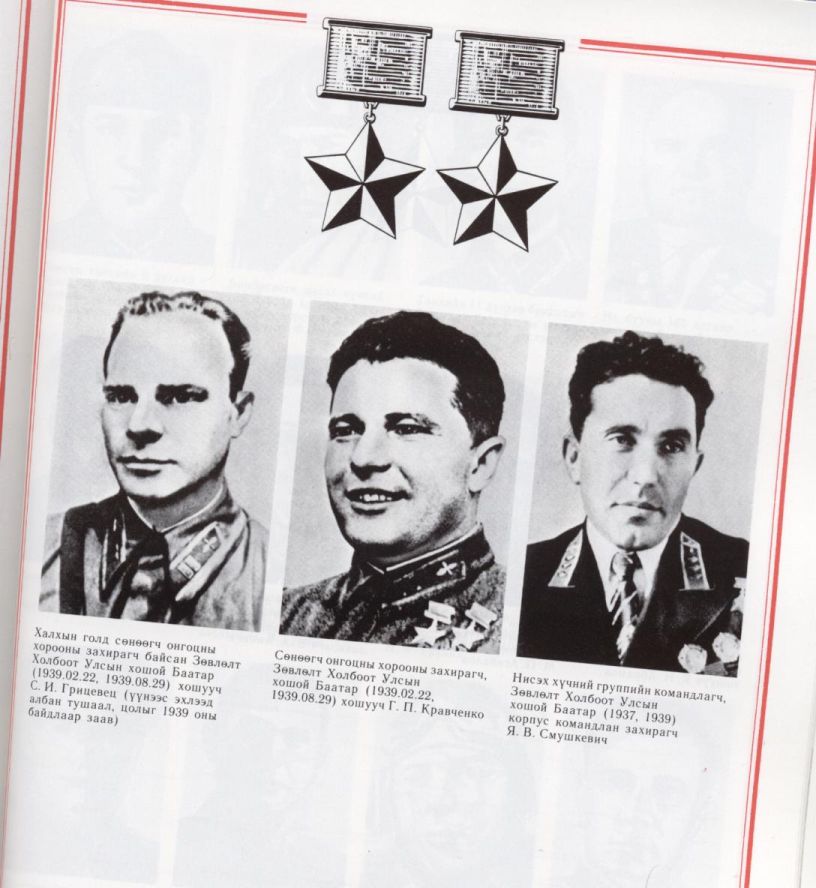
 0
0




882nd Queen Tamara Infantry Battalion
in Battlefields, Bunkers & Concrete
Posted
Resting place of 65 Russian (presumably meaning GEORGIAN) soldiers shot dead on the spot by the Germans on April 21, 1945
From a mass grave near the farm "Buitenzorg", Vuurtorenweg (i.e. lighthouse street), De Cocksdorp (name of a small town on Texel)